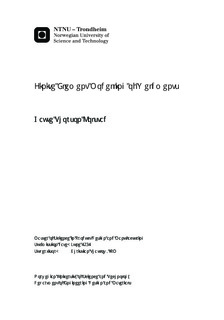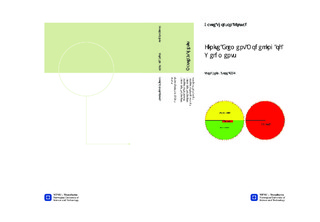| dc.contributor.advisor | Thaulow, Christian | nb_NO |
| dc.contributor.author | Kolstad, Gaute Thorson | nb_NO |
| dc.date.accessioned | 2014-12-19T12:28:12Z | |
| dc.date.available | 2014-12-19T12:28:12Z | |
| dc.date.created | 2012-11-10 | nb_NO |
| dc.date.issued | 2012 | nb_NO |
| dc.identifier | 567011 | nb_NO |
| dc.identifier | ntnudaim:7643 | nb_NO |
| dc.identifier.uri | http://hdl.handle.net/11250/241683 | |
| dc.description.abstract | Brittle fracture is a large problem for steel structures in the arctic region. It is thus important to qualify materials and welds so they do not behave in a brittle manner. Since fracture testing of the heat affected zone (HAZ) around a weld gives a lot of scatter, doing weld simulated testing is proposed as an alternative method. In this thesis cracks in weld simulated HAZ specimens are compared to cracks in real welds, by use of finite element simulations. A weld simulated specimen is usually more brittle than a real weld. The goal of this thesis is thus to find a general rule for how much more brittle a weld simulated test specimen is, compared to a real weld on a structure. It would then be possible to establish how brittle a real weld is based on the result from the weld simulated testing. As a fracture criterion the Weibull stress is used, which is a statistical criterion. Crack tip opening displacement (CTOD) is used as a measure on how brittle a specimen is. To compare weld simulated specimens with real welds, two 2D modified boundary layer (MBL) models are used. One homogeneous model to represent weld simulated specimens, and one with three different materials to represent a real weld. The three materials in the weld model are base material, welded material and heat affected zone. On the two models a large parameter study is performed. The variables investigated are: - Position of the crack relative to the HAZ. - Size of the HAZ. - Geometry constraint. - Mismatch in WM. - Mismatch in HAZ. - Hardening. - The Weibull exponent m. There have also been made 3D models to investigate the size effect on the weld simulated specimen. This is because a weld simulated specimen is limited to a cross-section of $10$x$10$~mm. The parameter study concludes that it is mainly the size of the HAZ, the yield stress mismatch and the geometry constraint, that make weld simulated specimens more brittle than welds. The 3D simulations are however concluding that the geometry constraint effect can not be included, due to the size of the small test specimen. Based on these results a general relationship is proposed between the critical CTOD for a weld simulated specimen, and the critical CTOD for a real weld. There are three requirements for this relationship to be valid: - At least 10% overmatch in HAZ compared to base material. - No more than 10% undermatch in HAZ compared to welded material. - Maximal brittle HAZ thickness of 0.5 mm. | nb_NO |
| dc.language | eng | nb_NO |
| dc.publisher | Institutt for produktutvikling og materialer | nb_NO |
| dc.subject | ntnudaim:7643 | no_NO |
| dc.subject | MTPROD produktutvikling og produksjon | no_NO |
| dc.subject | Industriell mekanikk | no_NO |
| dc.title | Finite Element Modelling of Weldments | nb_NO |
| dc.type | Master thesis | nb_NO |
| dc.source.pagenumber | 119 | nb_NO |
| dc.contributor.department | Norges teknisk-naturvitenskapelige universitet, Fakultet for ingeniørvitenskap og teknologi, Institutt for produktutvikling og materialer | nb_NO |

